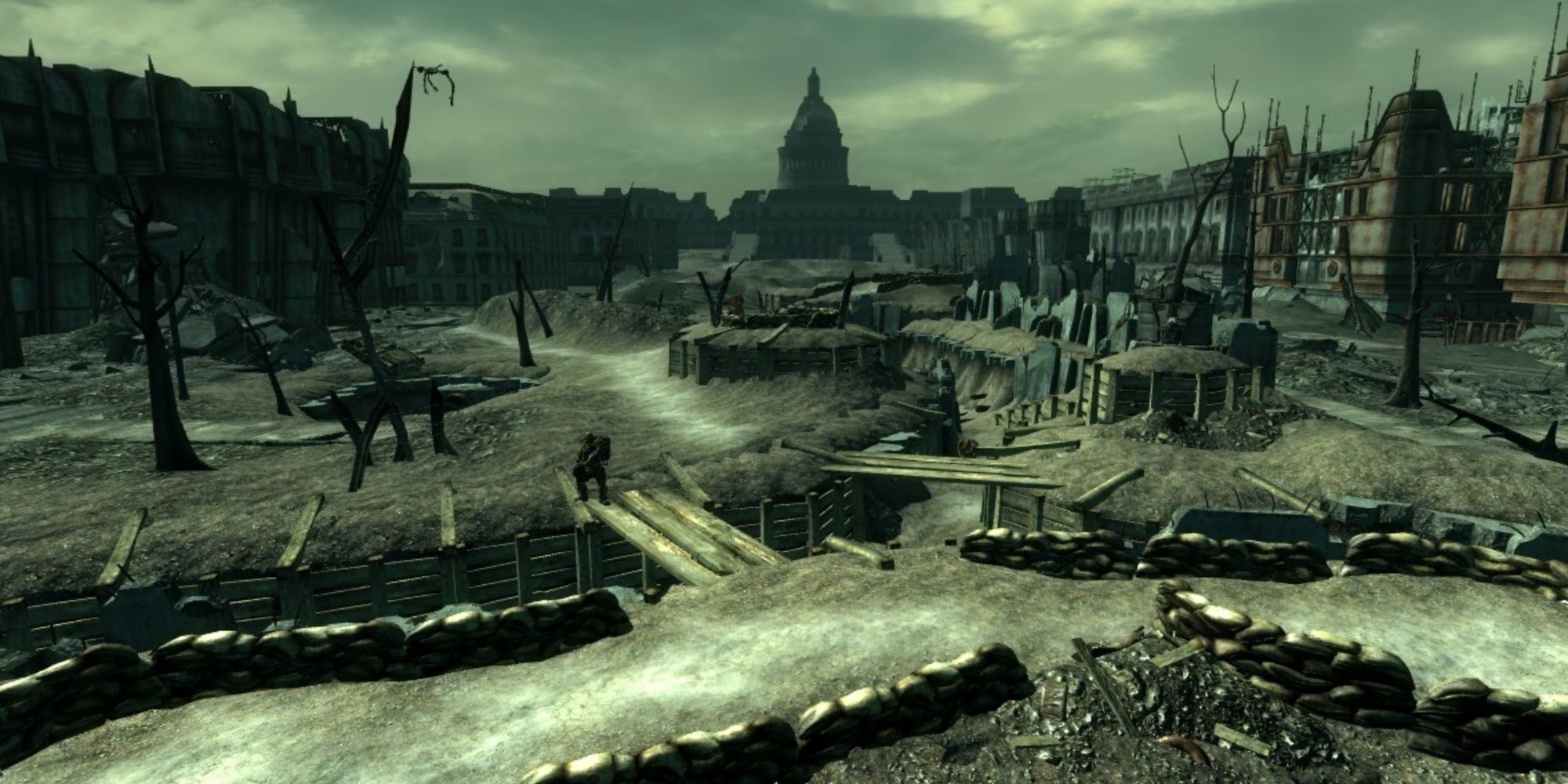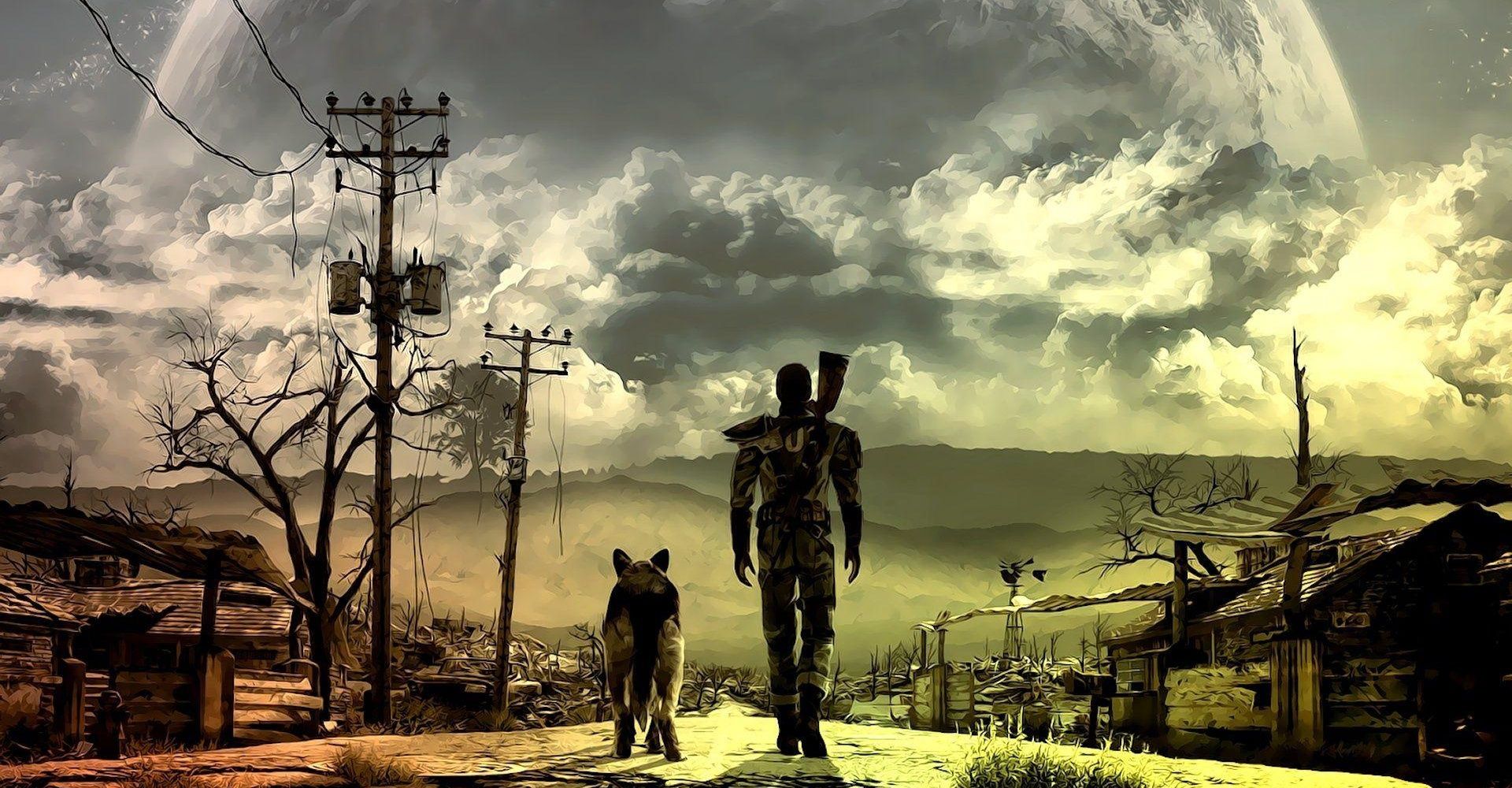How Fallout 3 Paved the Way for Starfield 15 Years Ago

[ad_1]
Highlights
- Fallout 3 revolutionized the Fallout franchise by changing the mechanics and perspective, turning it into a real-time action-adventure RPG with similarities to Bethesda’s other series, The Elder Scrolls.
- The shift in geography from California to the Capital Wasteland allowed Fallout 3 to offer a new narrative and setting, which resonated with many players and contributed to the game’s success.
- Fallout 3 laid the foundation for Bethesda’s current games, particularly Starfield, by allowing the developer to explore darker subject matter and move away from traditional fantasy, ultimately expanding its repertoire and changing its identity as a developer.
Bethesda is either one of the most revered or notorious developers of all time, depending on who is asked, and Fallout 3 has undoubtedly played a major role in shaping the company’s identity and reputation. 15 years after its release, and with a rumored Fallout 3 remaster in the works, the impact of the post-apocalyptic, first-person RPG can still be felt, especially when looking at Bethesda’s modern gaming output.
Before Bethesda took the reins with Fallout 3, the Fallout franchise was developed and published by Interplay Entertainment. The first two games in the series were traditional CRPGs, featuring a top-down perspective and turn-based combat. Interplay sold the rights to the franchise in 2007 to Bethesda, and the series was changed forever. Bethesda launched Fallout 3 the following year, drastically changing the fundamental mechanics and perspective of the series, turning it into a real-time action-adventure RPG that shared some DNA with Bethesda’s other leading franchise The Elder Scrolls. Fallout 3 retained the dark world and themes of its predecessors but rebranded and remixed many other core elements of the series.
Fallout 3 Changed the Franchise
Although the first two Fallout games were successful and instrumental to Interplay’s success in the late 90s and early 2000s, their popularity paled in comparison to that of Fallout 3. By the time Fallout 3 was released in 2008, gaming was slowly becoming more mainstream, with the most popular games of the era being first-person or third-person shooters. Fallout 3 moved further away from its roots as a tactical, turn-based CRPG and closer to these shooting games, but it still had a distinct sense of identity.
Fallout 3 follows The Lone Wanderer, a player-created character who escapes Vault 101 in search of their exiled father. This journey takes them through the Capital Wasteland, a vision of the Washington, DC area that has been reduced to rubble by nuclear war. This setting was a major shift from the setting of the first two games, which took place in California. The shift in geography allowed the game to offer not only new sights but also a narrative that was detached from that of the previous titles.
While The Lone Wanderer isn’t often considered the best Fallout protagonist among series fans, their linear and personal journey was vital to the story of Fallout 3, which resonated with many players. The narrative centers on the relationship between The Lone Wanderer and their father, and eventually grows into a heroic story about a mission to provide safe drinking water to the citizens of the Capital Wasteland. What the game lost in traditional, “blank slate” RPG foundations, it gained in a gripping and engaging personal story, and this approach would go on to inform Bethesda’s future titles.
How Fallout 3 Changed Bethesda
Fallout 3 would be followed by Skyrim, which many consider to be yet another shining gem in Bethesda’s crown. While Skyrim would serve as a return to Bethesda Game Studio’s fantasy RPG roots, the studio went back to the Fallout franchise a few years later, releasing Fallout 4 in 2015. The fourth entry doubled down on many of Fallout 3‘s elements, offering an even more predefined character and further sharpening the first-person shooter mechanics.
This approach made for a somewhat controversial game, as Fallout fans felt that the franchise was moving too far away from RPG fundamentals, becoming more of a first-person action-adventure game with less of an emphasis on character-building and decision-making. Nonetheless, the game was praised for improving upon the dense atmosphere, solid exploration, and quest design of Fallout 3.
This year, Bethesda delivered Starfield, one of the company’s most highly anticipated games. The similarities between Fallout and Starfield should be apparent to anyone familiar with the former franchise, as both games serve up the signature charm and tone of Bethesda, which can also be seen in The Elder Scrolls series. However, Fallout and Starfield are far more connected than The Elder Scrolls and Fallout; both Fallout and Starfield are set against a science-fiction backdrop, with an emphasis on firearms and minimal fantasy elements. They are also both more mature in tone, especially when compared to the more whimsical, fantastical The Elder Scrolls games.
Fallout 3 set the stage for Starfield. The game allowed Bethesda to explore darker subject matter, as the company had only developed the high-fantasy Elder Scrolls before that point (except for the obscure IHRA Drag Racing titles). If the developer hadn’t managed to break out of the fantasy mold with Fallout 3, then there’s a good chance it would have stuck with traditional fantasy. With Fallout 3, Bethesda Game Studios embarked on a path of speculative science fiction, and the faith many gamers placed in Starfield‘s ahead of its release would likely not have been as strong if not for the precedent set with the first-person post-apocalyptic game.
It’s clear that Fallout 3 laid the foundation for Bethesda’s current slate of games, and Starfield in particular, but whether this was ultimately a good thing is a subject of debate. Starfield has evoked a mixed response from gamers and critics, and while much of the criticism comes down to issues with exploration, technical performance, and the main quest, other points like the lack of deep RPG mechanics or decision-making can be leveled against Fallout 3 as well. Fallout 3 greatly expanded Bethesda Game Studios’s repertoire and identity, allowing the developer to be more than just the creators of The Elder Scrolls games. Thus, Bethesda’s reputation and opportunities as a developer were both forever changed by the game.
Fallout 3 is available now on PS3, Xbox 360, and PC.
Source link

